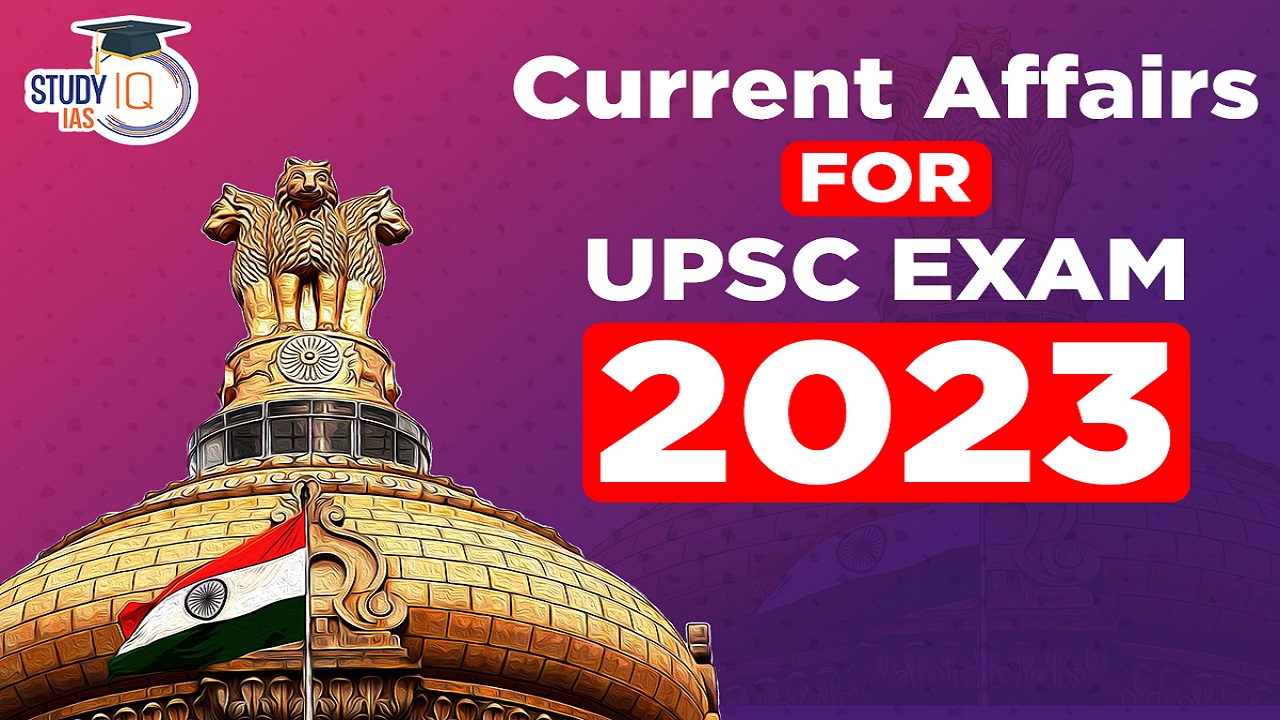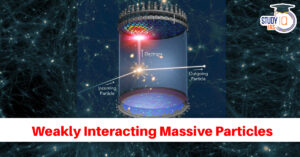Current Affairs 23rd June 2023 for UPSC Prelims Exam
National Consumer Disputes Redressal Commission (NCDRC)
Context: A West Delhi-based hospital has been fined by the National Consumer Disputes Redressal Commission (NCDRC) for negligence and unethical practices in vitro fertilisation procedure (IVF).
About National Consumer Disputes Redressal Commission (NCDRC)
- Definition: It is a quasi-judicial commission in India which was set up in 1988 under the Consumer Protection Act of 1986.
- Aim: The objective of the Commission as well as the respective state commissions and district fora is to provide speedy, economical and summary resolution of consumer complaints or disputes.
- Composition: The Commission is headed by a sitting or a retired Judge of the Supreme Court of India or a sitting or a retired Chief Justice of a High Court.
- Head Office: Delhi
NCDRC’s Recent Observation on IVF Clinics
- The NCDRC has ruled that there is a need to make it mandatory for Assisted Reproductive Technology (ART) centres to issue DNA profiling of babies born through ART procedures.
- The NCDRC has also observed that mushrooming of IVF clinics has made unethical practices rampant in India and that there is a need for a prompt and fixed timeline for accreditation of ART clinics by authorities.
Current Affairs 22nd June 2023 for UPSC Prelims Exam
Summer Solstice
Context: June 21 marked the summer solstice, the longest day of the year.
About Summer Solstice
- Definition: June 21 marks the summer solstice, the longest day of the year in the Northern Hemisphere. Solstice means “sun stands still” in Latin.
- Duration: Solstices happen twice per year: one for the winter and one for the summer and this is interchanged depending on which Hemisphere you live in.
- The longest day of the year happens on the day of the summer solstice since the earth receives the longest period of daylight during the day.
- Cause: Since Earth rotates on its axis, the Northern Hemisphere gets more direct sunlight between March and September over the course of a day, which also means people living in the Northern Hemisphere experience summer during this time.
- The rest of the year, the Southern Hemisphere gets more sunlight.
- During the solstice, the Earth’s axis, around which the planet spins, completing one turn each day, is tilted in a way that the North Pole is tipped towards the Sun and the South Pole is away from it.
- This imaginary axis passes right through the middle of the Earth from top to bottom and is always tilted at 23.5 degrees with respect to the Sun.
- Therefore, the solstice is that instant in time when the North Pole points more directly toward the Sun than at any other time during the year.
- While the solstice occurs at the same time across the world, different countries experience it at different times according to their time zones.
- Impact: This day sees the Earth receiving a greater amount of energy from the Sun.
- The maximum amount of sunlight received by the Northern Hemisphere during this time is usually on June 20, 21 or 22.
- In contrast, the Southern Hemisphere receives most sunlight on December 21, 22 or 23 when the northern hemisphere has its longest nights — or the winter solstice.
- The amount of light received by a specific area in the Northern Hemisphere during the summer solstice depends on the latitudinal location of the place.
- The further north one moves from the equator, the more light one receives during the summer solstice.
- At the Arctic Circle, the sun does not set during the solstice.
- Summer solstice, however, does not necessarily mean the earliest sunrise or latest sunset. That depends on the latitudinal location of the country.

What is Equinox ?
- An equinox is derived from words aequus (equal) and nox (night).
- It is commonly regarded as the instant when the center of the visible Sun is directly above the Equator.
- It occurs twice each year: around 20 March (called “Spring Equinox” as it marks the begining of spring in most cultures) and 23 September (called “Autumnal Equinox” as it marks the beginning of autumn).
- The equinoxes are the only times when the solar terminator (the “edge” between night and day) is perpendicular to the equator, and hence daytime and nighttime are of equal duration.
- Celebrations in India: In Hinduism, the summer solstice marks the transition of the sun into the zodiac sign of Cancer, known as “Karka Sankranti.”
- It is considered an auspicious time when the sun begins its northern journey, signalling the beginning of the sacred period of “Dakshinayana,” or the southern solstice.
- According to Hindu mythology, it is believed that deities and ancestors visit the Earth during this period.
- In the Indian agricultural calendar, summer solstice marks the onset of the monsoon season, bringing relief from the scorching heat and initiating the much-needed rainfall for crops.
- In some regions, farmers perform rituals and prayers to invoke the blessings of the sun god, seeking a bountiful harvest and agricultural prosperity.
- One of the most prominent celebrations during the summer solstice in India is the festival of “Rath Yatra” or the Chariot Festival.
- It is observed in the city of Puri, Odisha, where devotees pull the grand chariots of Lord Jagannath, Lord Balabhadra, and Devi Subhadra through the streets.
Matsya-6000
Context: India shall develop underwater submersible vehicle, Matsya 6000, by 2024, as part of the Samudrayaan Mission.
More on News
- The Titan submersible, which has previously ferried tourists to view the wreck of the Titanic buried 3,800 metres in the North Atlantic, lost contact with its mothership, Polar Prince, on June 17, 2023.
- Against this backdrop, multiple back-up safety measures for the crew have been placed in Matsya- 6000 submersible, though there may be reviews of the safety systems employed.
- Submersibles are relatively low-powered and must be ferried to a specific point in the sea by the mothership from where they are lowered into the sea with the crew bolted inside.
- After the dive, the submersible resurfaces, and the crew is brought back to the ship.
About Matsya 6000
- Definition: It is a manned underwater submersible vehicle capable of taking three humans to a depth of 6,000 m.
- Aim: MATSYA 6000 is being developed for the exploration of deep sea resources like minerals.
- Developed By: MATSYA 6000 vehicle is being designed and developed by National Institute of Ocean Technology (NIOT), Chennai under Ministry of Earth Sciences
- Features:
- It is made up of 2.1 meter diameter Titanium Alloy Personnel Sphere.
- Titanium is being preferred as choice of material as it is stronger than steel but many times lighter – a key criteria to ensure that the submersible can resurface with relative ease from the depths of the open ocean.
- It has an endurance of 12 hours under normal operation and 96 hours in case of emergency for human safety.
- It also has syntactic foam, a flotation device that would rise to the top and help determine the physical location of the submersible, even if it was unable to resurface.
- The communication system that will be used in Matsya-6000 is the ultra-short baseline acoustic positioning system (USBL).
- This allows the mothership, which has a transponder attached beneath, to send pulses and the travelling submersible to send pulses back.
- This will then allow the ship to determine the depth and orientation of the submersible.
- It would be possible for those inside the submersible to sporadically communicate verbally via an “acoustic telephone”.
- It is made up of 2.1 meter diameter Titanium Alloy Personnel Sphere.

- Significance:
- Manned Submersible facilitates the direct observation by the human in deep ocean in exploring mineral resources rich in Nickel, Cobalt, Rare Earths, Manganese etc. and collection of samples, which can be used for analysis.
- This initiative has immediate spin-offs in the form of underwater engineering innovations in asset inspection, tourism and promotion of ocean literacy.
- MATSYA 6000 will help in carrying out subsea activities such as high resolution bathymetry, biodiversity assessment, geo-scientific observation, search activities, salvage operation and engineering support.
What is Samudrayaan Mission?
- Definition: Samudrayaan Mission was launched in September, 2021 under Deep Ocean Mission.
- Feature: As a part of Samudrayaan Mission undertaken by the Union Ministry of Earth Sciences, India aims to send three persons to 6000 meters below sea level.
- Importance: India has a unique maritime position, a 7517 km long coastline, which is home to nine coastal states and 1,382 islands.
- The mission aims to boost the central government’s vision of ‘New India’ that highlights the blue economy as one of the ten core dimensions of growth.

India-United States Defence Acceleration Ecosystem (INDUS-X)
Context: The PM of India’s recent visit to US has resulted in many vital agreements.
India-United States Defence Acceleration Ecosystem (INDUS X)
- Definition: The US Department of Defence (DoD) and the Ministry of Defense have launched the India-US Defense Acceleration Ecosystem (INDUS-X) under the Critical and Emerging Technologies (iCET).
- Aim: INDUS-X seeks to expand the strategic technology partnership and defence industrial cooperation between the two countries.
- Features:
- Academic and startup programming partnerships with universities and collaboration of startups with defence majors’ supply chains.
- Possible public-private partnerships, such as innovation, testing, and certification labs and centres for defence startup collaboration.
- A joint innovation fund will be set up for which private investors will be engaged to garner support for investment in defence and dual-use startups.
- There shall be easing regulations for cross-border development and trade as well as standardisation of Indo-US certifications for technology startups.
- Significance: Indian and US defence firms can identify opportunities to establish formal and informal mentoring with start-ups to assist with market access and technology know-how.
- Indian and US defence firms can explore options for supply chain collaborations with start-ups.
- Both the countries will strengthen ties between their defense industrial ecosystems to make them more innovative, accessible, and resilient.
- INDUS X has the potential to be a catalyst for India to achieve its target of $5 billion in defense exports by 2025, and for India to diversify its defense supply chain.
- INDUS-X will create jobs for working families in both countries and promote global peace, security, and prosperity.
- INDUS-X will catalyse innovation and help equip both countries’ armed forces with the capabilities they need to defend a free and open Indo-Pacific.


 Securities Markets Code Bill 2025: Towar...
Securities Markets Code Bill 2025: Towar...
 Weakly Interacting Massive Particles (WI...
Weakly Interacting Massive Particles (WI...
 India–Oman Trade Deal: CEPA Signed to ...
India–Oman Trade Deal: CEPA Signed to ...

























